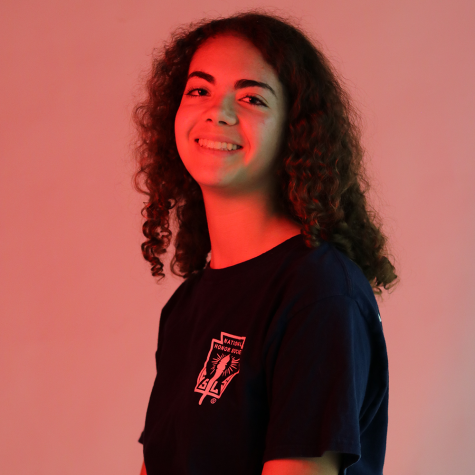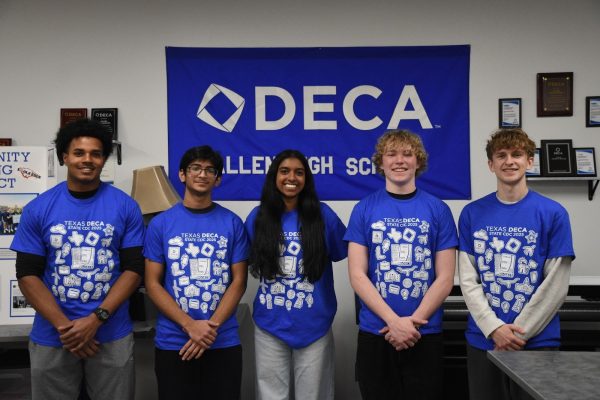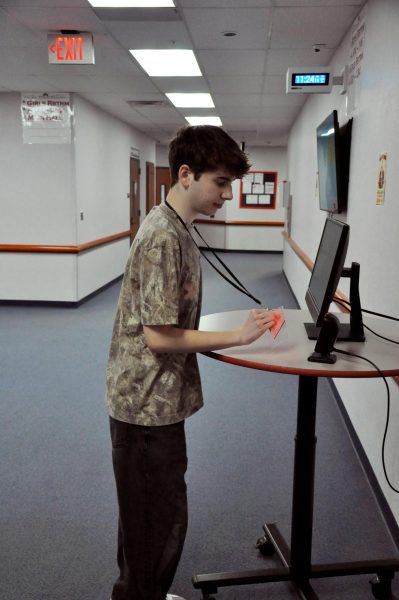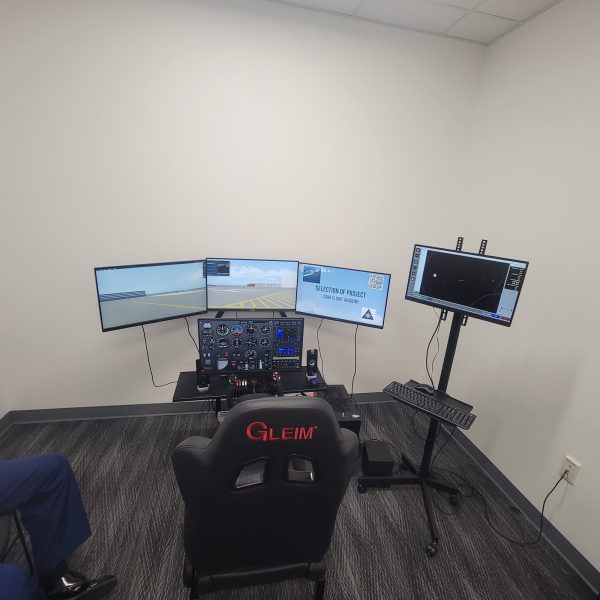Destination Imagination, Not Just for Kids
The STEM focused program, Destination Imagination, puts a focus on thinking outside the box
Imagination. A lot of people hear that word and think of small children coloring outside the lines, typically not building huge contraptions or clothes made of duct tape. Students in Destination Imagination (DI) think otherwise.
Charlotte Taylor, a manager of DI for several years, and junior Thomas Schnaible, a DI team member, shed some light on what DI is and why it’s important.
“Just recently I did a project in my English class, I was overly prepared because DI opened my mind up to so many different things, and the ways it helps me is endless,” Schnaible said.
The non-profit company Destination Imagination started in 1982 as a way for children elementary age to college age to expand their knowledge and curiosity in art and Science Technology Engineering and Math (STEM) fields.
“Challenges were in areas like science, engineering, improvisation, fine arts and community service,” Taylor said. “No matter what your interest, there is a challenge for you.
This year, several students, including Schnaible and freshman Ian Taylor, are on a DI team in the high school division, both competing in two events: improv and science. The improv team focuses on crafting a skit that can be flexible with random challenges during the tournament while the science team focuses on building different structures to do different feats like supporting weight or reaching high.
“If you give me cardboard, a box cutter, and some duct tape, I can create anything,” Schnaible said.
The theme for this year’s improv event is “Exploration” and focuses heavily on famous explorers and cultures around the world. Each team has to create a short skit about meeting two famous explorers in a randomly selected place to return a cultural artifact, which is randomly selected from a list of eight cultural treasures pre-picked by the team. The explorers, which range from fictional characters like Captain Nemo from “20,000 Leagues Under the Sea,” to famous pirates like Blackbeard.
“DI really is an acquired taste. It’s also a lot of hard work,” Schnaible said.
Although the process of creating a skit and planning it beforehand may not seem like something that belongs in the improv category, the challenge has several random events that each member of the team has to work around including a random setback to be implemented at a random time to keep the team guessing. Some common setbacks include all the spoons being missing or the moon falling. Even outside of in-event setbacks, challenges can arise.
“[The team] found that their [invention] wouldn’t fit through the gym doors and it looked pretty hopeless,” Taylor said. “One team member had a very creative idea, and 15 minutes later, they were able to thread it through the door. It is a perfect example of the mindset that DI helps to create.”
DI is meant to boost creativity through and beyond the elementary level and promote ingenuity to help make the next generation of engineers and innovators.
“Over the past seven years that I have worked with DI teams, I have seen firsthand the benefits as these students have grown and become more innovative, creative, resourceful, critical thinkers,” Taylor said. “DI teaches 21st century learning skills; innovation and creativity are considered by many to be the future of our next jobs.”

Stephanie Scarano is a senior with a passion for gaming, obscure theatre and the X-Men. She plans on studying Hospital Administration.






